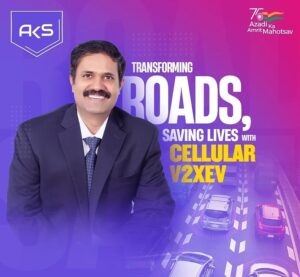The Dhaula Kuan to Gurgaon stretch of National Highway 48 (NH-48) has become synonymous with relentless traffic congestion, transforming what were once peak-hour delays into an all-day ordeal. This persistent gridlock not only frustrates daily commuters but also hampers economic productivity and exacerbates environmental concerns. Understanding the root causes and exploring viable solutions is imperative for restoring efficiency and safety to this critical transportation artery.
Identifying the Core Issues
Several interrelated factors contribute to the chronic congestion along this corridor:
- Inadequate Road Design: The existing infrastructure suffers from poorly designed entry and exit points, particularly near Shankar Vihar and Shiv Murti, leading to frequent bottlenecks.
- Surging Traffic Volumes: NH-48 serves as a vital link between Delhi and Gurgaon, accommodating a substantial number of daily commuters, commercial vehicles, and airport traffic. The road’s capacity is often exceeded, resulting in continuous congestion.
- Ongoing Construction Projects: Infrastructure developments, such as those near Mahipalpur intended to connect NH-48 with the Dwarka Expressway, have temporarily reduced road space, further exacerbating traffic woes.
- Insufficient Traffic Management: The lack of synchronized traffic signals, poor lane discipline, and inadequate enforcement contribute to chaotic traffic conditions, impeding smooth vehicular movement.
Consequences of Persistent Congestion
The ramifications of continuous traffic jams extend beyond mere inconvenience:
- Extended Commute Times: Travel durations have become unpredictable, with commuters often spending hours on stretches that should take minutes, leading to reduced productivity and personal time.
- Economic Impacts: Businesses face delays in logistics, increased fuel consumption, and higher operational costs, collectively affecting the region’s economic efficiency.
- Environmental Degradation: Prolonged idling of vehicles contributes to elevated emissions, deteriorating air quality, and posing health risks to the populace.
Strategic Initiatives and Proposed Solutions
Addressing these challenges requires a multifaceted approach:
- Comprehensive Infrastructure Redesign: Authorities are considering revamping entry and exit points, widening existing roads, and constructing grade separations to alleviate bottlenecks.
- Pilot Decongestion Projects: A road safety committee has been established to conduct surveys, analyze traffic patterns, and implement targeted interventions, starting with the Dhaula Kuan to Gurgaon stretch.
- Alternative Transportation Solutions: Innovative proposals, such as introducing Skybus or double-decker bus services on elevated roads supported by single pillars, aim to accommodate around 10,000 passengers per hour, reducing reliance on private vehicles.
- Enhanced Traffic Management Systems: Implementing intelligent traffic systems, enforcing lane discipline, and optimizing signal timings can improve traffic flow and safety.
- Public Transportation Integration: Improving connectivity between different modes of public transport can encourage commuters to shift from private vehicles, reducing overall traffic volume.
Collaborative Efforts and Future Outlook
The complexity of the congestion issue necessitates collaboration among various stakeholders, including government agencies, urban planners, traffic management experts, and the public. The formation of dedicated committees and the initiation of pilot projects underscore a commitment to systematic problem-solving.
Community involvement is also crucial. Commuters can contribute by adhering to traffic rules, utilizing public transportation, and staying informed about alternative routes during peak congestion.
Recognizing the urgency, ITS India is initiating a study with IIT Professors, Town Planners, and Industry Experts to analyze traffic patterns and propose sustainable solutions.
Conclusion
Traffic congestion between Dhaula Kuan and Gurgaon is a multifaceted challenge that impacts daily life, economic activities, and environmental health. Strategic infrastructure improvements, innovative transportation solutions, and effective traffic management can transform this critical corridor into a more efficient and commuter-friendly route.




